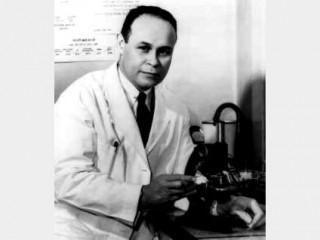
Charles R. Drew biography
Date of birth : 1904-06-03
Date of death : 1950-04-01
Birthplace : Washington, D.C.
Nationality : African-American
Category : Science and Technology
Last modified : 2011-02-01
Credited as : Surgeon, medical researcher,
African American surgeon Charles Richard Drew pioneered in developing the blood bank and was an outstanding leader in the training of surgeons.
Charles R. Drew was born in Washington, D.C., on June 3, 1904, the eldest of five children. The close-knit family lived in modest circumstances and was highly respected.
Drew was educated in the Washington public schools. He earned a bachelor of arts degree from Amherst College (1926) and his doctor of medicine and master of surgery degrees from McGill University in Canada (1933). Having decided upon a career in surgery, he went to Howard University in Washington, D.C., in 1935. After the next year as a surgical resident, he was sent by Howard for 2 years of advanced study under a General Education Board fellowship to Columbia University, which awarded him the doctor of medical science degree (1940).
At Columbia, under the direction of John Scudder, Drew completed his pioneering and definitive thesis Banked Blood (1940). The Blood Transfusion Betterment Association in New York funded various programs of research; one of these, on blood plasma, was conducted by Scudder and Drew. In 1940, during World War II, Scudder suggested that the association ship dried plasma to France and England. The association appointed Drew director of its "Blood for Britain" project in September 1940.
In 1941 Drew was appointed director of the first American Red Cross Bank and assistant director of blood procurement for the National Research Council, in charge of blood for use by the U.S. Army and Navy. He criticized the policy of segregating blood racially as having no scientific basis.
In October 1941 Drew returned to Howard as head of the department of surgery and was made an examiner for the American Board of Surgery. Chief of staff of Freedmen's Hospital from 1944 to 1946, he was appointed medical director of the hospital for 1946-1947. At Howard, Drew firmly established a progressive modern surgery program. He was a dynamic and inspirational teacher. While he was still alive, eight of his residents became diplomates of the American Board of Surgery, and many more who started their training under him became board-certified and did significant work all over the world.
Drew published 19 papers, the first 13 dealing with blood therapy. The last 6 reflected broadening interests, one posthumous title being "Negro Scholars in Scientific Research."
During 6 years as chairman of the surgical section of the National Medical Association, Drew brought new vigor and standards to the group. He was in demand as a speaker, and he served on numerous boards with a wide spectrum of interests, including the 12th Street Branch of the YMCA in Washington.
Most of Drew's achievements were promptly recognized. He received the Spingarn Medal of the NAACP (1943) and honorary doctor of science degrees from Virginia State College (1945) and Amherst College (1947). In 1946 he became a fellow of the International College of Surgeons and served in 1949 as surgical consultant to the surgeon general, U.S. Army. Drew's radiant geniality and warm sense of humor endeared him to patients. He married Minnie Lenore Robbins on Sept. 23, 1939, and the couple had four children. He was killed in an automobile accident on April 1, 1950.
In 1959 the Sigma Pi Phi fraternity presented an oil portrait of Dr. Drew to the American National Red Cross. In Los Angeles the Charles R. Drew Medical Society and the Charles R. Drew Postgraduate Medical School of the Martin Luther King Jr. Hospital perpetuate his name. A health center in Brooklyn and the Harlem Hospital Center blood bank in New York City are named for him. The surgical section of the National Medical Association has an annual Charles R. Drew Forum for the presentation of original surgical research, and about 20 public schools in America have been named for him.
















